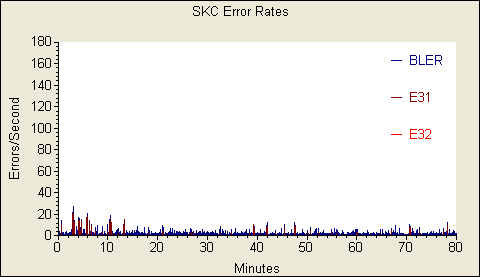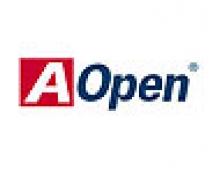AOpen DUW1608/ARR
9. Writing Quality Tests - Clover System Tests
Review Pages
2. Transfer Rate Reading Tests
3. CD Error Correction Tests
4. DVD Error Correction Tests
5. Protected Disc Tests
6. DAE Tests
7. Protected AudioCDs
8. CD Recording Tests
9. Writing Quality Tests - Clover System Tests
10. DVD Recording Tests
11. CDSpeed/PlexTools Scans - Page 1
12. CDSpeed/PlexTools Scans - Page 2
13. CDSpeed/PlexTools Scans - Page 3
14. CDSpeed/PlexTools Scans - Page 4
15. CDSpeed/PlexTools Scans - Page 5
16. CDSpeed/PlexTools Scans - Page 6
17. Writing Quality Tests - Almedio AEC-1000
18. DVD+R DL - Page 1
19. DVD+R DL - Page 2
20. AOpen vs SA300
21. Booktype Setting
22. Conclusion
The Clover Systems CDX Compact Disc Analyzer is a high-speed tool to quantitatively measure the quality of a CD. It will analyze CD-DA, CD-ROM, CD-ROM XA, CD-I, CD-R, Photo-CD, Enhanced CD and CD-RW discs at 4X, 8X, 24X, 32X or 40X speed. It effectively measures disc quality by examining the quantity and severity of CIRC errors generated during playback. It also provides the capability to measure signal parameters related to pit geometry, such as asymmetry and reflectivity. Together, all these bits of information provide a thorough analysis of disc quality. The Clover Systems Analyzers can also perform various format-checking tests on data discs, and do bit-for-bit data comparison on all types of CDs. All tests are carried out at the maximum speed of 40X.
CIRC error correction uses two principles to detect and correct errors. The first is redundancy (extra information is added, which gives an extra chance to read the disc), and the second is interleaving (data is distributed over a relatively large physical area). The CIRC error correction used in CD players uses two stages of error correction, the well known C1 and C2, with de-interleaving of the data between the stages.
The error type E11 means one bad symbol was corrected in the C1 stage. E21 means two bad symbols were corrected in the C1 stage. E31 means that there were three or more bad symbols at the C1 stage. This block is uncorrectable at the C1 stage, and is passed to the C2 stage. Respectively, E12 means one bad symbol was corrected in the C2 stage and E22 means two bad symbols were corrected in the C2 stage. E32 means that there were three or more bad symbols in one block at the C2 stage, and therefore this error is not correctable.
BLER (Block Error Rate) is defined as the number of data blocks per second that contain detectable errors, at the input of the C1 decoder. Since this is the most general measurement of the quality of a disc, you will find BLER graphs for all media tested below. If you click on the images you can see a more detailed table, indicating error levels. The Red Book specification (IEC 908) calls for a maximum BLER of 220 per second, averaged over ten seconds. Discs with higher BLER are likely to produce uncorrectable errors. Al low BLER shows that the system as a whole is performing well, and the pit geometry is good. However, BLER only tells us how many errors were generated per second, and it does not tell us anything about the severity of those errors.
- BenQ 52X @ 40X
- Maxell 48X @ 40X
- SKC 52X @ 40X
- Traxdata 52X @ 40X
- Taiyo Yuden 48X @ 48X
- Summary
Clover Systems CDX Test Results |
|||||
Disc ID |
SKC |
Maxell |
BenQ |
Traxdata |
TY |
GRADE |
A |
F |
F |
D |
D |
PASS/FAIL |
FAIL |
FAIL |
FAIL |
FAIL |
FAIL |
AVE BLER |
1.0 |
7.1 |
5.4 |
2.7 |
17.5 |
AVE E11 |
0.7 |
6.4 |
1.9 |
2.2 |
15.4 |
AVE E21 |
0.1 |
0.2 |
0.4 |
0.1 |
1.4 |
AVE E31 |
0.3 |
0.4 |
3.0 |
0.4 |
0.6 |
AVE E12 |
1.8 |
1.1 |
11.4 |
4.9 |
3.4 |
AVE E22 |
0.0 |
0.1 |
6.4 |
0.5 |
0.5 |
AVE E32 |
0.0 |
0.1 |
2.0 |
0.0 |
0.1 |
TOT E22 |
0 |
296 |
30796 |
2473 |
2436 |
PK BLER |
27 |
365 |
165 |
85 |
209 |
PK E11 |
11 |
46 |
26 |
18 |
183 |
PK E21 |
7 |
22 |
11 |
8 |
30 |
PK E31 |
21 |
308 |
140 |
84 |
85 |
PK E12 |
302 |
267 |
289 |
479 |
268 |
PK E22 |
0 |
61 |
332 |
154 |
113 |
PK E32 |
0 |
68 |
127 |
24 |
39 |
TOT E32 |
0 |
249 |
9477 |
34 |
330 |
10PK BLER |
12 |
57 |
87 |
34 |
147 |
10PK E11 |
3 |
21 |
14 |
4 |
123 |
10PK E21 |
1 |
4 |
5 |
1 |
18 |
10PK E31 |
10 |
31 |
69 |
30 |
20 |
10PK E12 |
108 |
43 |
169 |
398 |
198 |
10PK E22 |
0 |
5 |
178 |
63 |
45 |
10PK E32 |
0 |
4 |
60 |
0 |
1 |
While no disc passed the test, SKC, Taiyo Yuden and Traxdata media reported good writing quality with no or minimum E32 errors being reported. We would like the performance with the remaining media brands to be fixed in a future firmware revision. The CD recording quality of the AOpen DUW1608/ARR can be characterized as average.
- AppendixMedia Label |
ID Code |
Manufacturer Name |
Lead Out TIme |
SKC 52x |
97m26s26f |
SKC Co., Ltd.
|
79m59s73f |
Maxell 48X |
97m15s17f |
Ritek Co. |
79m59s70f |
TY 80min 48X |
97m24s 1f |
Taiyo Yuden |
79m59s72f |
TraxData 52X |
97m15s17f |
Ritek |
79m59s70f |
BenQ 52X
|
97m22s67f
|
Daxon
|
79m59s74f
|
Review Pages
2. Transfer Rate Reading Tests
3. CD Error Correction Tests
4. DVD Error Correction Tests
5. Protected Disc Tests
6. DAE Tests
7. Protected AudioCDs
8. CD Recording Tests
9. Writing Quality Tests - Clover System Tests
10. DVD Recording Tests
11. CDSpeed/PlexTools Scans - Page 1
12. CDSpeed/PlexTools Scans - Page 2
13. CDSpeed/PlexTools Scans - Page 3
14. CDSpeed/PlexTools Scans - Page 4
15. CDSpeed/PlexTools Scans - Page 5
16. CDSpeed/PlexTools Scans - Page 6
17. Writing Quality Tests - Almedio AEC-1000
18. DVD+R DL - Page 1
19. DVD+R DL - Page 2
20. AOpen vs SA300
21. Booktype Setting
22. Conclusion























